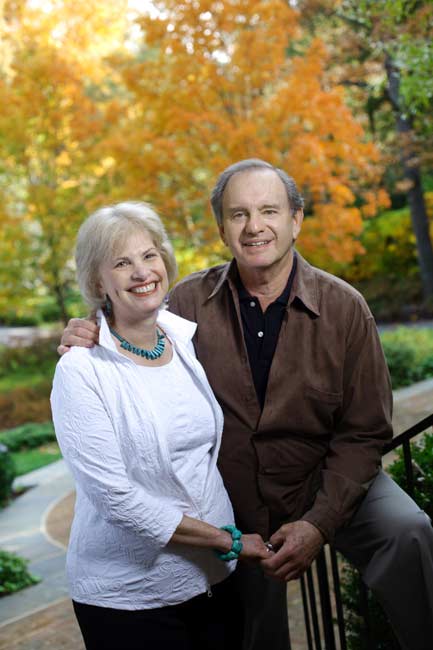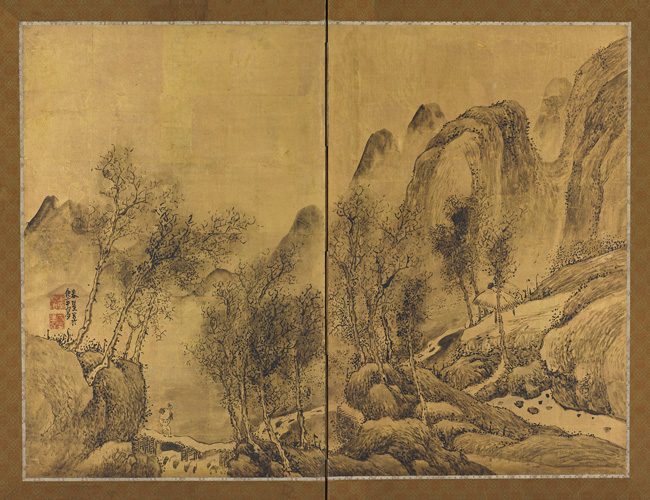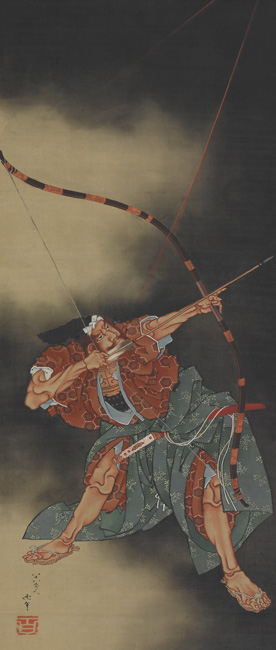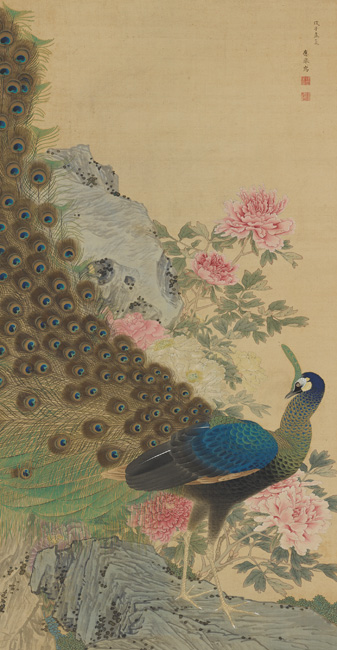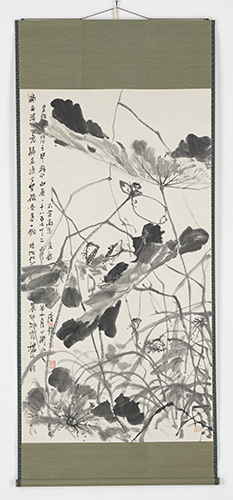Robert and Betsy Feinberg discovered their passion for Japanese art on a visit to the Metropolitan Museum of Art in 1972—but in the gift shop, not the galleries. For $2.00 they purchased a poster depicting a 16th-century screen painting of a Portuguese ship arriving in Japan. Since that day, the Feinbergs’ have gone on to collect approximately 300 works of art from the Edo (1615–1868) and Meiji (1868–1912) periods and have recently promised those works to the Harvard Art Museums.
Stunning examples of painted screens and hanging scrolls on silk and paper, coupled with books, handscrolls, fans, sculpture, and a lantern, are included in the gift and tell a comprehensive story of Edo art. Religious and secular themes are expressed in richly illustrated landscapes of flora and fauna, including mountain, village, and nautical scenes, and portraits of warriors, musicians, spiritual figures, and beauties. When our new facility opens in the fall of 2014, a selection of paintings will be displayed in the relocated permanent galleries of the Arthur M. Sackler Museum.
The couple will also fund the art study center for the Sackler Museum, which is one of five study spaces that will make up an expansive Art Study Center in our new facility. The Art Study Center will provide a unique environment for learning through the close examination of original works of art. The Feinberg art study center will specifically enable visitors to view and interact with objects from the Sackler Museum’s collection of Asian, ancient, and Islamic and later Indian art that are not on display in the galleries.
See above for images of some of the beautiful works that the Feinbergs will give to the museums.
